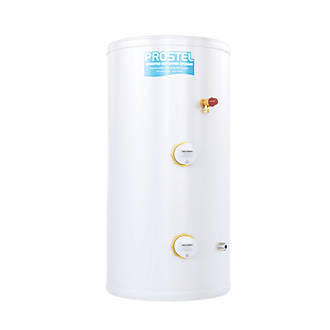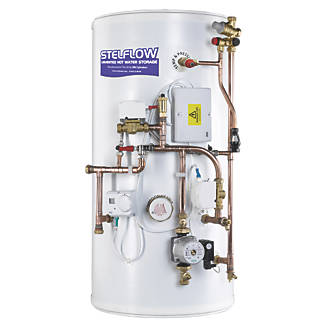Can only be electric. How big is his house to warrant two 300 litre stores? I am considering a DHW only thermal store and a thermal store/buffer for UFH. So maybe 140 litres of DHW only thermal store and a UFH cylinder, both open vented. Cannot be more than say 5 foot high for either. With UFH the floor temperature is setback overnight. When operating overnight it will be on Economy 7 direct, not operating on stored energy for an energy store, that is reserved for day use. So the store has to be big enough to cope with day demand of UFH.There are two basic types, vented and unvented, the latter needs to be serviced more often, he had two I think around 300 litres each, with all the bits looked more like this product Diameter 545 mm product Height 1980 mm you are looking at around £2000+ for a system like this plus fitting, in the main they are used when people want to also use wood burners, the major problem with all fires burning unprocessed wood or coal is particular emissions, to stop this either you burn charcoal or coke or run the wood burner at a set rate so neither is a lot of heat wasted up the flue nor does it produce particular emissions. So wood burner used once a day and the heat is stored and distributed when required.
product Diameter 545 mm product Height 1980 mm you are looking at around £2000+ for a system like this plus fitting, in the main they are used when people want to also use wood burners, the major problem with all fires burning unprocessed wood or coal is particular emissions, to stop this either you burn charcoal or coke or run the wood burner at a set rate so neither is a lot of heat wasted up the flue nor does it produce particular emissions. So wood burner used once a day and the heat is stored and distributed when required.
This is really the same as using off peak power, it's a way to store heat until required. However those who use wood burners are either a bunch of thieves stealing wood from anywhere they can find it, or save the earth nuts, and even if the money it costs to fit the wood burner will take 50 years to get back, they will still fit them so show off to visitors how ecological friendly they are.
£2000 will buy a lot of electricity, so in real terms can't see one of these paying for its self in a flat, in a 5 bedroom house with solar panels on roof and wood burner in main room these may be an option, but in a flat just a pipe dream.
Last edited:

